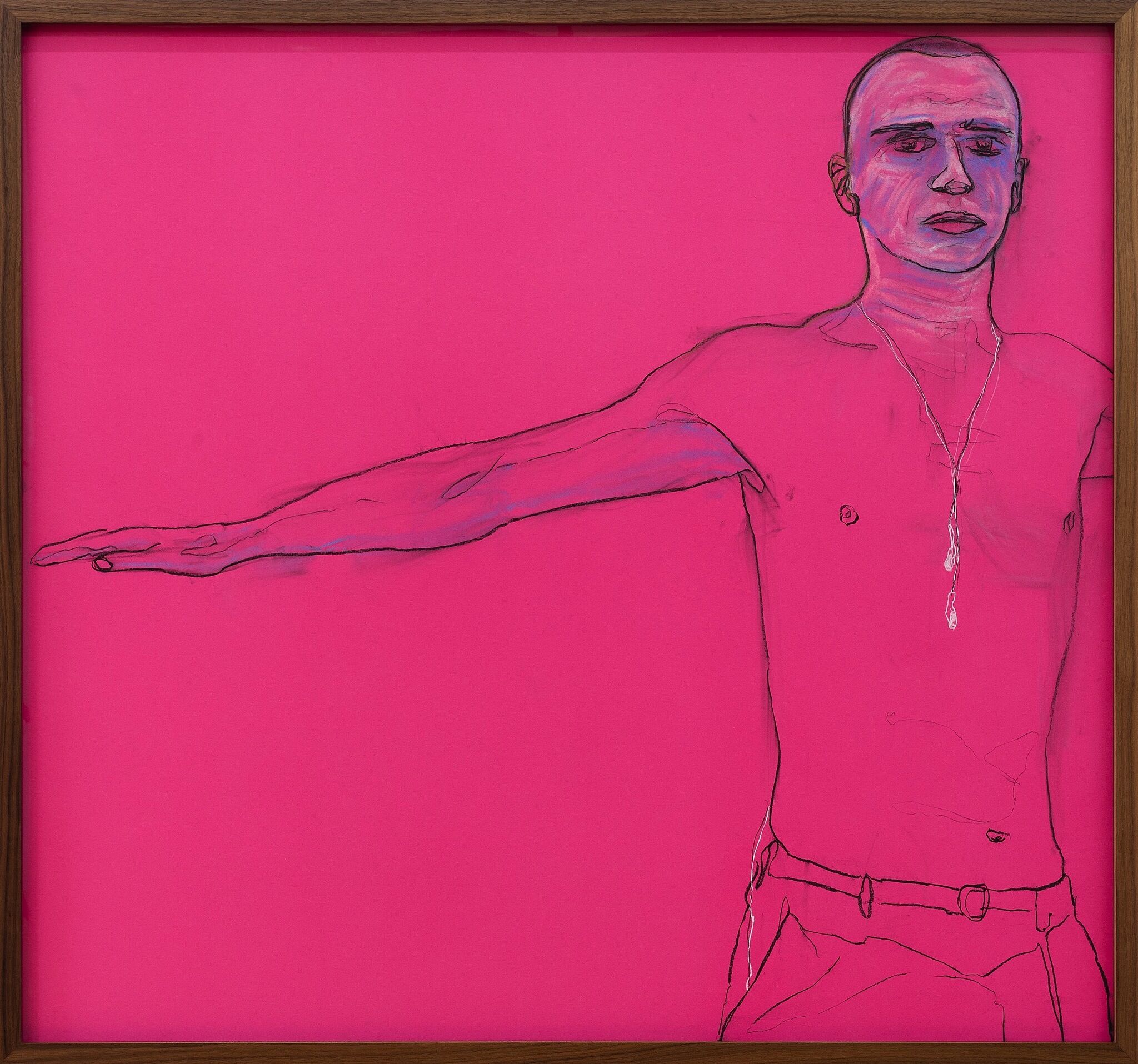Whitney Biennial 2019 | Art & Artists
May 17–Oct 27, 2019
Whitney Biennial 2019 | Art & Artists
Kyle Thurman
73
Floor 5
Born 1986 in West Chester, PA
Lives in Brooklyn, NY
Composed on expanses of seamless background paper, the human-scaled drawings by Kyle Thurman present figures isolated from their original context, carefully rendered through delicate lines and coloring. Thurman bases the drawings on online news photographs— ephemeral and pedestrian images so prevalent that their impermanence can seem symptomatic of a cultural malaise. The works’ titles, Suggested Occupation, refer to jobs suggested to the artist as a teenager, as do the drawing’s sources—archetypal male images of soldiers, athletes, or priests. Here these images become something else altogether as photographs are translated to drawings: the production creates a heightened sense of intentionality, an invitation to look more slowly at moments that otherwise could disappear.
In each drawing the artist considers the entire space of the frame, informed by his education in film and photography. Thurman’s studies in screenwriting also influence his approach to visual storytelling, with the fragmented images serving as components of a potential larger narrative.
Suggested Occupation 3, 2016
-
0:00
Kyle Thurman
0:00
Kyle Thurman: My name is Kyle Thurman.
Narrator: Thurman bases these large-scale drawings on photographs he finds online, mostly in news sources.
Kyle Thurman: I'm interested in how drawing relates to photography, so there's the link between the digital image and how it translates into a drawing and what changes in that transformation, and what new things emerge through the act of drawing, based on photography.
I'm interested in creating a contrast to the speed at which we typically look at and digest digital images, to create a slower process of looking at these images. This doesn't necessarily mean that the drawings always take a super long time to make.
I look at these drawings as fragments of larger stories, and I'm interested in how, when these fragments are put together in a room, there's tensions created between the drawings that open up possible narratives.
I obviously remove the context of the kind of scene or the site at which these characters are existing, and this can open up the read of the drawing a lot.

